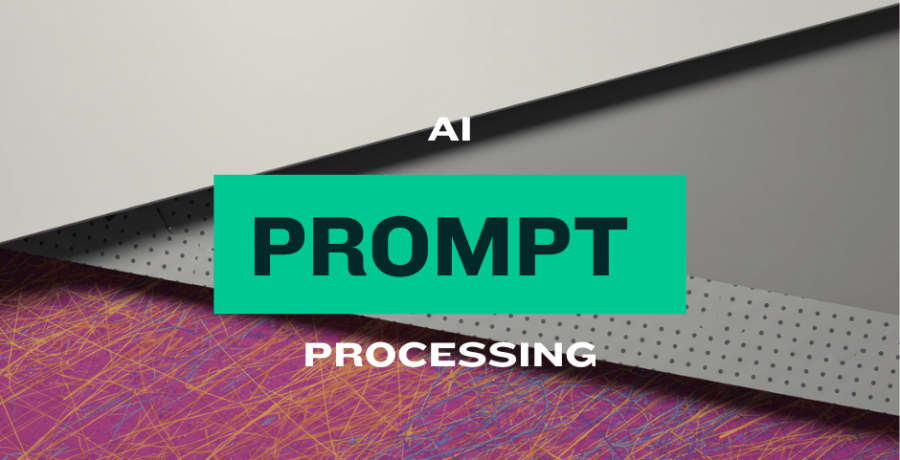Our Enhanced Exploration of Zero-Shot Prompting
Our Enhanced Exploration of Zero-Shot Prompting
The realm of artificial intelligence is in a perpetual state of transformation, and at the forefront of this evolution are large language models (LLMs). These sophisticated systems, trained on vast datasets of text and code, possess an uncanny ability to understand and generate human-like language. While traditional AI development relied heavily on task-specific training, a paradigm shift is underway, driven by the remarkable capabilities of zero-shot prompting.
The Essence of Zero-Shot: Leveraging Pre-Trained Intelligence
Zero-shot prompting represents a fundamental departure from conventional AI training. Instead of meticulously curating labeled datasets and fine-tuning models for each specific task, we harness the inherent knowledge and reasoning abilities that LLMs acquire during their extensive pre-training phase.
Imagine a seasoned polymath, possessing a wealth of knowledge across diverse domains. When presented with a novel question, they can draw upon their existing understanding to formulate a coherent and insightful response, even without prior experience in that particular area. This analogy captures the essence of zero-shot prompting.
The magic lies in the sheer scale of pre-training data and the sophisticated architecture of LLMs, primarily based on the transformer model. These models learn intricate patterns, relationships, and contextual nuances from the vast corpus of text they are exposed to, enabling them to generalize and perform tasks they have never explicitly been trained for.
The Art and Science of Prompt Engineering: Guiding the AI's Response
While zero-shot prompting eliminates the need for extensive training, it places a premium on the art of prompt engineering. A well-crafted prompt acts as a precise instruction, guiding the LLM towards the desired output.
Here are some key principles to consider:
- Clarity and Unambiguity: The prompt should be clear, concise, and devoid of ambiguity. Use precise language to define the task and the expected output.
- Specificity and Granularity: For complex tasks, break them down into smaller, more manageable sub-tasks. Provide specific instructions for each step.
- Role-Playing and Persona Assignment: Assigning a specific role or persona to the LLM can significantly enhance its performance. For example, "You are a seasoned journalist..." or "You are an expert in astrophysics..."
- Output Formatting and Structure: Clearly specify the desired format of the output, such as bullet points, numbered lists, or structured paragraphs. Providing examples of the desired format can also be beneficial.
- Use of Delimiters: Employ delimiters, such as triple quotes (""") or backticks (```), to clearly demarcate the input text from the instructions. This helps the LLM distinguish between the prompt and the data it needs to process.
- Few-shot within Zero-shot: Sometimes, providing a single example within a zero shot prompt can dramatically increase the quality of the response.
Practical Examples: Putting Zero-Shot Prompting to Work
Text Summarization:
- Prompt: """Summarize the following article in three concise sentences: [Insert Article Text Here]"""
- Prompt: """Provide a bullet-point summary of the key findings in this research paper: [Insert Research Paper Text Here]"""
2. Language Translation:
- Prompt: """Translate the following English sentence into French: 'The quick brown fox jumps over the lazy dog.'"""
- Prompt: """Translate this Spanish paragraph into German: [Insert Spanish Paragraph Here]"""
3. Question Answering:
- Prompt: """Who was the first person to walk on the moon?"""
- Prompt: """What are the main causes of climate change?"""
- Prompt: """Explain the theory of relativity in simple terms."""
4. Sentiment Analysis:
- Prompt: """Determine the sentiment of the following customer review: 'The product was excellent and exceeded my expectations.'"""
- Prompt: """Is this tweet positive, negative, or neutral? [Insert Tweet Here]"""
5. Data Extraction:
- Prompt: """Extract the names and email addresses from the following text: [Insert Text with Names and Emails Here]"""
- Prompt: """What is the date and location of this event? [Insert Event Description Here]"""
6. Code Generation:
- Prompt: """Write a Python function that calculates the factorial of a given number."""
- Prompt: """Generate a simple HTML table with two columns: 'Name' and 'Age'."""
7. Classification:
- Prompt: """Classify the following email as spam or not spam: [Insert Email Text Here]"""
- Prompt: """Is this movie review positive or negative? [Insert Movie Review Here]"""
8. Role-Playing and Complex Reasoning:
- Prompt: """You are a highly skilled debate coach. Explain the pro and cons of artificial general intelligence in 5 sentences."""
- Prompt: """You are an expert financial analyst. Based on the following market trends, predict the stock price of [Company Name] in one month. [Market trend data]"""
- Prompt: """You are a creative writer. Write a short story about a cat that can talk."""
9. Few-shot within Zero-shot:
- Prompt: """Translate the following to pirate speak. Example: 'Hello, how are you?' translates to 'Ahoy, how be ye?' Now, translate this: 'Where is the treasure?'"""
- Prompt: """Summarize the following text, use one sentence. Example: 'The cat slept' is summarized as 'A feline rested.' Now summarize: [Text to summarize]"""
Tips for Experimenting:
- Start Simple: Begin with straightforward prompts and gradually increase complexity.
- Iterate and Refine: Don't be afraid to experiment with different wordings and structures.
- Pay Attention to Output: Analyze the model's responses and adjust your prompts accordingly.
- Use Delimiters: Use delimiters to clearly define the input data.
- Test different LLMs: Different LLMs react differently to various prompts.
A Spectrum of Applications: From Text to Code and Beyond
The versatility of zero-shot prompting extends across a wide range of applications:
- Content Generation and Summarization: Generating creative content, drafting emails, summarizing articles, and creating concise summaries of lengthy documents.
- Language Translation: Translating text between languages with remarkable accuracy, even for low-resource languages.
- Question Answering and Knowledge Retrieval: Providing factual answers to general knowledge questions, retrieving information from vast repositories of text, and answering complex questions.
- Sentiment Analysis and Opinion Mining: Analyzing the emotional tone of text, identifying customer sentiment, and extracting opinions from reviews and social media posts.
- Data Extraction and Information Retrieval: Extracting specific information from unstructured text, such as names, dates, and locations.
- Code Generation and Explanation: Generating simple code snippets, explaining existing code, and assisting with software development tasks.
- Classification and Categorization: Assigning items to predefined categories, such as classifying emails as spam or not spam.
Acknowledging the Limitations: A Balanced Perspective
While zero-shot prompting offers immense potential, it is essential to acknowledge its limitations:
- Ambiguity and Contextual Understanding: LLMs may struggle with ambiguous prompts or tasks that require deep contextual understanding beyond their pre-training data.
- Bias and Fairness: LLMs inherit biases from their training data, which can manifest in biased or unfair outputs.
- Reasoning Complexity and Logical Deduction: Complex reasoning tasks, especially those requiring multi-step logical deduction or specialized knowledge, can be challenging.
- Hallucinations and Factual Accuracy: LLMs may generate plausible-sounding but factually incorrect information, known as hallucinations.
- Lack of Real-World Grounding: LLMs do not have direct access to real-world experiences, which can limit their understanding of certain concepts.
The Path Forward: Enhancing Zero-Shot Capabilities
The future of zero-shot prompting is filled with exciting possibilities. Ongoing research is focused on:
- Developing More Sophisticated Prompt Engineering Techniques: Exploring new methods for crafting prompts that can elicit more accurate and nuanced responses.
- Enhancing Reasoning Abilities and Logical Deduction: Improving LLMs' ability to perform complex reasoning and logical deduction.
- Integrating External Knowledge Sources: Combining zero-shot prompting with retrieval mechanisms to ground LLM responses in real-world data.
- Developing Continual Learning Methods: Enabling LLMs to continuously learn and adapt without explicit fine-tuning.
- Exploring Prompt Chaining and Agentic Workflows: Using the output of one prompt as the input for another, or enabling LLMs to use tools and interact with their environments.
Zero-shot prompting represents a significant leap forward in AI, empowering us to unlock the potential of LLMs with unprecedented flexibility and efficiency. As these models continue to evolve, zero-shot prompting will play an increasingly vital role in shaping the future of artificial intelligence.





Comments (0)